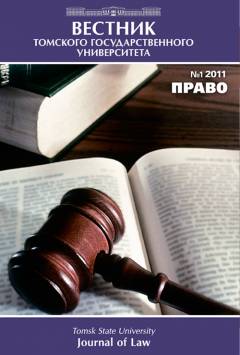Elements of penalization and international criminal law
International criminal law is a relatively independent branch of international public law like international criminal procedural law or international penal law. Its subject-matter covers internationally significant relations in the sphere of criminalization and penalization. International criminal law is based on the rules of international humanitarian law and provisions of international criminal procedural law. Moreover, the system of punishments is formed on the basis of state sovereignty. Therefore, traditionally, international criminal law pays less attention to the issues of punishment than those of crimes. International criminal law often uses the notion "sanction" the content of which is wider than that of "punishment", though, this fact is often disregarded by Russian lawyers. The position of the European Court of Human Rights in relation to the prohibition of torture, inhuman or degrading treatment or punishment deserves special attention. Although, capital punishment has not been used in Russia since 1996, the problem of its return is being discussed these days. The author is critical about the return, especially, when capital punishment is recommended for the crimes not involving homicide. What is more, this contradicts the Constitution (Article 20). In 2003 Russia quashed the punishment of confiscation. In 2006 special confiscation appeared as a measure of criminal character. Being against the return of the above punishments but adhering to the rules of international criminal law, the author supports the extended confiscation as a "security measure" in corruption-related crimes.
Keywords
confiscation, capital punishment, international principles of penalization, конфискация, criminal punishment, смертная казнь, международные принципы пенализации, уголовное наказаниеAuthors
| Name | Organization | |
| Utkin Vladimir A. | Tomsk State University | krim_tsu@mail.ru |
References

Elements of penalization and international criminal law | Tomsk State University Journal of Law. 2015. № 2 (16). DOI: 10.17223/22253513/16/14